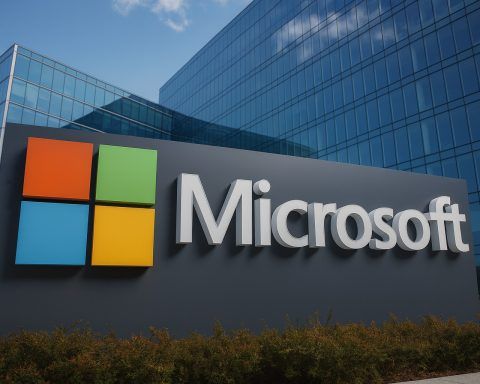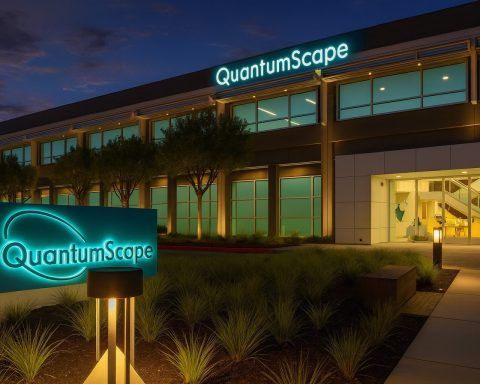- Nvidia Alliance Propels 771% Surge: Navitas Semiconductor (NASDAQ: NVTS) stock rocketed over 771% in six months after it announced a major partnership with Nvidia, despite the company’s declining revenue [1]. Investors are betting on Navitas’s long-term potential as a supplier of next-gen GaN (gallium nitride) and SiC (silicon carbide) power chips for EVs and AI data centers [2].
- Record High & Wild Swings: Shares hit an all-time high around $17 in late October, up 330% year-to-date and nearly 750% since May [3]. A frenzy of buying (and short covering) drove Navitas from penny-stock levels to one of 2025’s top-performing semiconductor stocks. The rally has been volatile – after peaking, profit-taking knocked the stock down about 12% intraday [4], and Navitas last closed near $14 per share (≈$3 billion market cap) [5].
- Bull vs Bear Tug-of-War: Bulls tout Navitas as “one of the most important growth stories of the decade” in EV/AI power semiconductors [6], even calling it a potential “transformative” force in power electronics riding the AI and EV megatrends [7]. Bears, however, warn that an “enormous amount of growth is already priced in,” noting Navitas trades around 30× forward sales with no profits yet [8]. Wall Street’s average 12-month price target is only ~$6.30 – implying over 50% downside from current levels [9].
- Red Flags – Dilution & Earnings Dip: A former bull-turned-bear analyst cautions that two downside catalysts are looming [10]. First, Navitas’s share count is rising (guidance suggests ~7.5% more shares outstanding, hinting at possible dilution) [11]. Second, revenue is actually falling – Q3 sales are forecast around $10 million, down from a year ago [12]. Navitas is slated to report Q3 earnings on November 3, 2025, and any disappointment could put downward pressure on the stock.
- Hype Meets High Hurdles: Navitas’s cutting-edge GaN/SiC technology gives it an edge – its chips run cooler and switch up to 100× faster than traditional silicon, enabling ~40% higher power efficiency [13]. This is crucial for NVIDIA’s new 800-volt “AI factory” data centers that far exceed old 48V systems. The Nvidia deal was hailed as a “watershed moment” by Navitas’s CEO [14], instantly raising the company’s profile. Going forward, Navitas must prove it can deliver on this promise. With heavy short interest (~25% of shares) and sky-high expectations, the stock faces a make-or-break test of whether it can sustain real growth to justify the AI-fueled hype [15] [16].
Record Rally Fueled by Nvidia’s AI Power Deal
Navitas Semiconductor has undergone a meteoric rise in recent months, transforming from an obscure small-cap into a market darling virtually overnight. The catalyst was a headline-grabbing collaboration with NVIDIA announced in mid-October. Navitas revealed it developed advanced 800 V GaN and SiC power devices for NVIDIA’s next-generation “AI factory” supercomputers [17]. In plain terms, Navitas’s high-voltage chips will help power Nvidia’s cutting-edge AI data centers that run on 800 V direct current – a radical leap from the ~48 V standard in traditional server racks [18].
The news “electrified” investors. Navitas’s stock jumped ~21% in one day on the announcement, then kept climbing steadily all week [19]. By October 16, NVTS had hit around $15.63 (a 12-month high at the time), and after a weekend of buzz it surged again on Monday, Oct. 20 [20]. That day, shares spiked another ~18% intraday, touching $17.79 and closing near $17.10 [21]. For context, Navitas began the year near $4 (and was barely $2 late last year), with a 52-week low of just $1.53 [22]. Hitting the mid-$17s marked an astounding rise of 330% year-to-date and roughly 750% since May, when Nvidia’s interest first put Navitas on the map [23] [24]. “It’s been a shoot-to-orbit move for what was once an obscure small-cap stock,” one market observer quipped amid the frenzy [25].
Such breathtaking gains were amplified by a classic short squeeze dynamic. An estimated 25–30% of Navitas’s float had been sold short by skeptics [26] [27]. As the price rocketed higher, many bearish traders were forced to buy back shares to cover their positions, which fueled the rally even further. Volume exploded – on Oct. 20, over 90 million NVTS shares traded (nearly 3.5× the average), reflecting momentum buyers piling in [28]. By late October, Navitas was a regular fixture on high-flyer lists, and even a 2× leveraged ETF (NVTX) tracking Navitas jumped 405% in six weeks of trading [29] [30], an eye-popping example of AI mania in the chip sector.
The Hype: “Transformative” Tech and EV/AI Megatrends
Why all the excitement over a small chip company with modest revenue? Navitas is pioneering GaN (gallium nitride) and SiC (silicon carbide) power semiconductors, which are widely seen as next-generation technologies to replace legacy silicon power chips. GaN and SiC devices can switch much faster (up to 100×) and handle high voltages more efficiently, meaning significantly higher power density and lower energy loss in applications from fast chargers to server power supplies [31]. These characteristics are crucial for emerging markets like ultra-efficient AI supercomputers, electric vehicles, solar inverters, and fast chargers, where traditional silicon struggles to keep up [32].
Navitas has been repositioning itself to surf these megatrends. Under new CEO Chris Allexandre (a former Renesas executive who took the helm in 2023), the company pivoted from its initial niche – smartphone chargers – into high-growth arenas like AI servers, EV drivetrains, and renewable energy systems [33]. In fact, just this month Navitas launched a joint “Digital Power” lab with China’s GigaDevice to co-develop next-gen power solutions for AI data centers, EVs and green energy deployments [34]. This broader strategic vision aims to firmly entrench Navitas in the center of the AI and EV boom.
Proponents argue Navitas’s Nvidia partnership validates its technology and opens enormous opportunities. Navitas’s GaNFast and GeneSiC chip families are now on the radar of the world’s AI leader (Nvidia), positioning Navitas as a key enabler of the “AI infrastructure” revolution [35] [36]. “As NVIDIA drives transformation in AI infrastructure, we’re proud to support it,” Navitas’s CEO Gene Sheridan said, calling the deal a “watershed moment” for the company [37]. Some analysts believe Navitas could ride this momentum to become “a transformative company in power electronics” over the next decade [38] [39] – analogous to how early bets on Nvidia or Tesla paid off for investors. Navitas is also unique as virtually the only pure-play GaN power semiconductor firm in the U.S. public markets [40]. With GaN/SiC hype in full swing and massive trends (AI, EV, clean energy) converging, bulls say this uniqueness justifies a premium and could lead to multi-year growth if the company executes well [41]. One upbeat expert went so far as to call Navitas “one of the most important growth stories of the decade” in the EV/AI chip space [42].
The Hurdles: Overvaluation, No Profits, and Dilution Worries
While the story is exciting, critics note that Navitas’s fundamentals haven’t caught up with its stock price – not by a long shot. Despite the Nvidia-fueled euphoria, Navitas is still a money-losing company with relatively small revenue. In 2024, it’s on track for only around $40–50 million in sales (last year was $68 million) [43], and it remains deep in the red (net margins around -180% per recent data) [44]. The Nvidia data-center chips are still in development, so no revenue from that partnership will hit for some time [45]. Meanwhile, Navitas’s core business (selling GaN chips for chargers and solar etc.) actually saw declining sales recently [46]. The company’s second-quarter 2025 revenue fell year-over-year, and current Q3 guidance suggests only ~$10 million in revenue, down about 30% YoY [47]. In other words, growth has stalled even as the stock has skyrocketed.
Valuation is a major concern. At ~$14 a share, Navitas commands roughly a $3 billion market cap, translating to an astronomical 40–50× price-to-sales ratio and a forward P/E that’s meaningless without profits [48] [49]. By conventional metrics, NVTS looks extremely overvalued unless its business ramps up far faster than currently anticipated [50]. Wall Street analysts largely echo this caution. As of now, the consensus price target is only around $6–7 [51]. In fact, even after Navitas’s Nvidia announcement, Rosenblatt Securities downgraded the stock to “Neutral” on Oct. 20, with analyst Kevin Cassidy noting the optimism but lifting his target only from $4 to $12 [52]. That $12 target is still well below the recent trading range. Across roughly eight analysts, the most bullish official target tops out at ~$12, and many have moved to Hold/Neutral ratings [53]. This suggests even supportive analysts feel much of the good news is already baked in, and several see 50% or more downside risk from the $15–17 levels [54]. As one research note bluntly put it, “Navitas may have won the lottery in attention – now it has to prove it can deliver the goods” [55] [56].
Beyond valuation, share dilution is a worry. Navitas has been raising capital and issuing equity to fund its R&D and expansion. The company’s guidance indicates its share count is increasing – one analysis noted about a 7.5% rise in outstanding shares heading into Q3 [57]. This could be due to recent fundraising or converting warrants/notes, and it means current shareholders are getting diluted. A prominent Seeking Alpha contributor (formerly bullish from $2 levels) announced he sold his position around the recent highs, specifically citing the risk of dilution and a shrinking cash runway as reasons to “take profits” now [58]. He and other bears argue that with Navitas likely needing more cash long before it turns profitable, further equity offerings could weigh on the stock.
Finally, the stock’s extreme volatility itself is a double-edged sword. With such a high short interest and speculative fervor, NVTS can swing wildly on any rumor or hiccup. This was evident after the peak: once shares crossed $17, some traders rushed to lock in gains. By the next day (Oct. 21), NVTS tumbled about 12% by late morning [59], a reminder that rapid climbs can be followed by abrupt drops. “Enormous momentum works both ways,” bears warn, suggesting that if the AI hype cools or Navitas hits an execution snag, the comedown could be harsh. Short sellers have already reloaded positions on any upticks [60], betting the stock will eventually fall back to Earth. In sum, skeptics see a classic bubble: a tiny company riding a hot narrative, priced for perfection with little room for error [61].
Outlook: Sky-High Expectations vs. Delivering Results
Navitas now stands at a crossroads between immense opportunity and immense expectations. The next major test will be its Q3 earnings report on November 3, 2025 [62]. Don’t expect blockbuster Nvidia-related revenue just yet (those AI chips are still sampling), but analysts will be laser-focused on management’s guidance and commentary [63]. Key questions include: Is demand picking up for Navitas’s existing GaN and SiC products? How soon and how large could orders from Nvidia (or other data-center/EV customers) ramp up? Is the company securing new design wins in EVs, solar, or data centers that validate the growth story? And critically, when will Navitas approach breakeven or profitability? Navitas’s leadership will be under pressure to outline a credible growth path to justify the stock’s rich valuation [64]. As one analyst put it, Navitas has “captured the market’s imagination” – now it must back that up with execution [65].
The broader market climate will also influence Navitas’s fate. Semiconductor stocks have been buoyed by 2025’s AI boom, but any shift in economic conditions or a tech sentiment reversal could hit high-fliers like NVTS especially hard [66]. For instance, rising interest rates or a rotation out of speculative names could quickly deflate the stock’s momentum. On the other hand, continued enthusiasm for AI infrastructure and EVs provides a tailwind – Navitas has aligned itself with two of the most powerful tech trends of this era, and its Nvidia alliance gives it credibility in the space. If Navitas can announce additional partnerships or big customer wins, or show that its GaN/SiC innovations translate into accelerating sales, that could reassure investors that the current price isn’t just fluff. Notably, some observers think Navitas’s story is just beginning – The Motley Fool predicts NVTS could climb another 50% by next year as its Nvidia partnership and EV/data-center focus make it “one of the explosive semiconductor stocks heading into 2026” [67] [68].
For now, the consensus among experts is cautiously divided. The bull camp is holding firm that Navitas’s technological edge in GaN/SiC and its strategic pivot toward AI and EV markets will eventually translate into real revenue growth, vindicating its high valuation. The bear camp believes gravity will catch up – that Navitas’s stock has run too far ahead of fundamentals and a painful correction is likely as reality sets in. With the stock up several hundred percent in a year, even many bulls concede the near-term bar is high. “A lot of good news may already be priced in,” warned Zacks Investment Research after the recent run-up [69]. In other words, Navitas will need to consistently dazzle the market with growth to keep its share price aloft.
Bottom line: Navitas Semiconductor has ridden the AI hype train to dizzying heights, fueled by a game-changing Nvidia deal and the promise of next-gen power tech. It’s a classic high-risk, high-reward story. The coming weeks and months will reveal whether Navitas can grow into its lofty valuation – or whether this rocket-ship stock will face a hard landing if the promised growth doesn’t materialize. Investors and analysts alike will be watching Navitas’s next moves closely, as 2025’s thrill ride in NVTS turns into a pivotal chapter heading into 2026.
Sources: Financial press and analysis including Nasdaq/Motley Fool [70], Yahoo Finance/Insider Monkey [71], Seeking Alpha [72], Benzinga [73] [74], MarketBeat [75], TechStock² (ts2.tech) in-depth market coverage [76] [77], and company statements [78].
References
1. www.nasdaq.com, 2. www.nasdaq.com, 3. ts2.tech, 4. ts2.tech, 5. www.wallstreetzen.com, 6. ts2.tech, 7. ts2.tech, 8. ts2.tech, 9. ts2.tech, 10. tickernerd.com, 11. tickernerd.com, 12. tickernerd.com, 13. ts2.tech, 14. ts2.tech, 15. ts2.tech, 16. ts2.tech, 17. ts2.tech, 18. ts2.tech, 19. ts2.tech, 20. ts2.tech, 21. ts2.tech, 22. ts2.tech, 23. ts2.tech, 24. ts2.tech, 25. ts2.tech, 26. ts2.tech, 27. ts2.tech, 28. ts2.tech, 29. www.benzinga.com, 30. www.benzinga.com, 31. ts2.tech, 32. ts2.tech, 33. ts2.tech, 34. ts2.tech, 35. ts2.tech, 36. ts2.tech, 37. ts2.tech, 38. ts2.tech, 39. ts2.tech, 40. ts2.tech, 41. ts2.tech, 42. ts2.tech, 43. tickernerd.com, 44. tickernerd.com, 45. ts2.tech, 46. www.nasdaq.com, 47. tickernerd.com, 48. tickernerd.com, 49. ts2.tech, 50. ts2.tech, 51. ts2.tech, 52. ts2.tech, 53. ts2.tech, 54. ts2.tech, 55. ts2.tech, 56. ts2.tech, 57. tickernerd.com, 58. tickernerd.com, 59. ts2.tech, 60. ts2.tech, 61. ts2.tech, 62. ts2.tech, 63. ts2.tech, 64. ts2.tech, 65. ts2.tech, 66. ts2.tech, 67. tickernerd.com, 68. tickernerd.com, 69. ts2.tech, 70. www.nasdaq.com, 71. ts2.tech, 72. tickernerd.com, 73. www.benzinga.com, 74. www.benzinga.com, 75. ts2.tech, 76. ts2.tech, 77. ts2.tech, 78. ts2.tech




